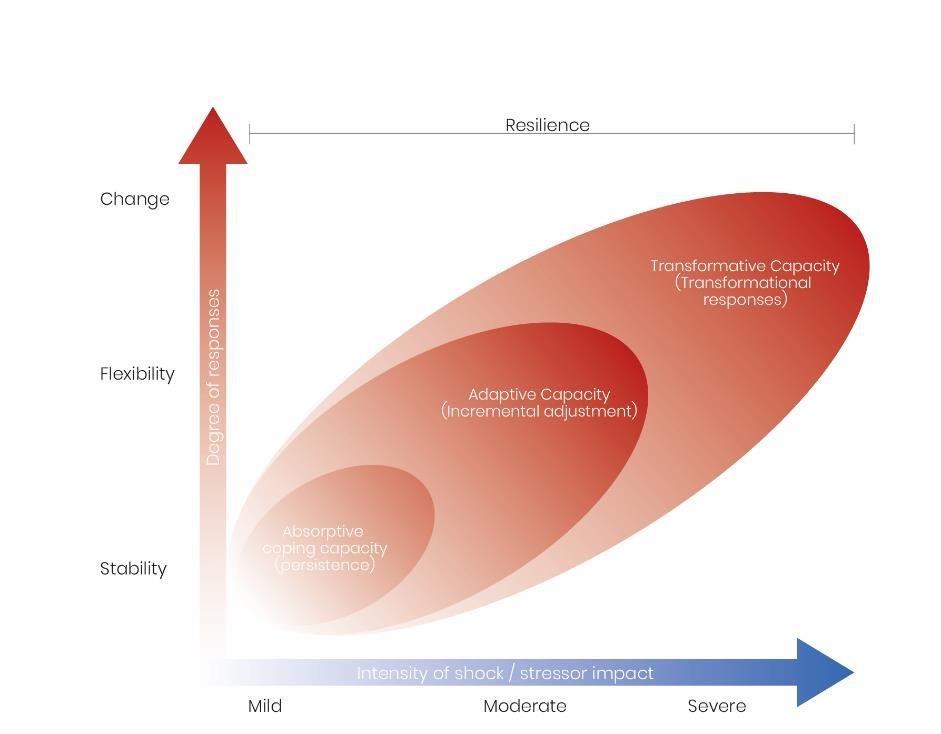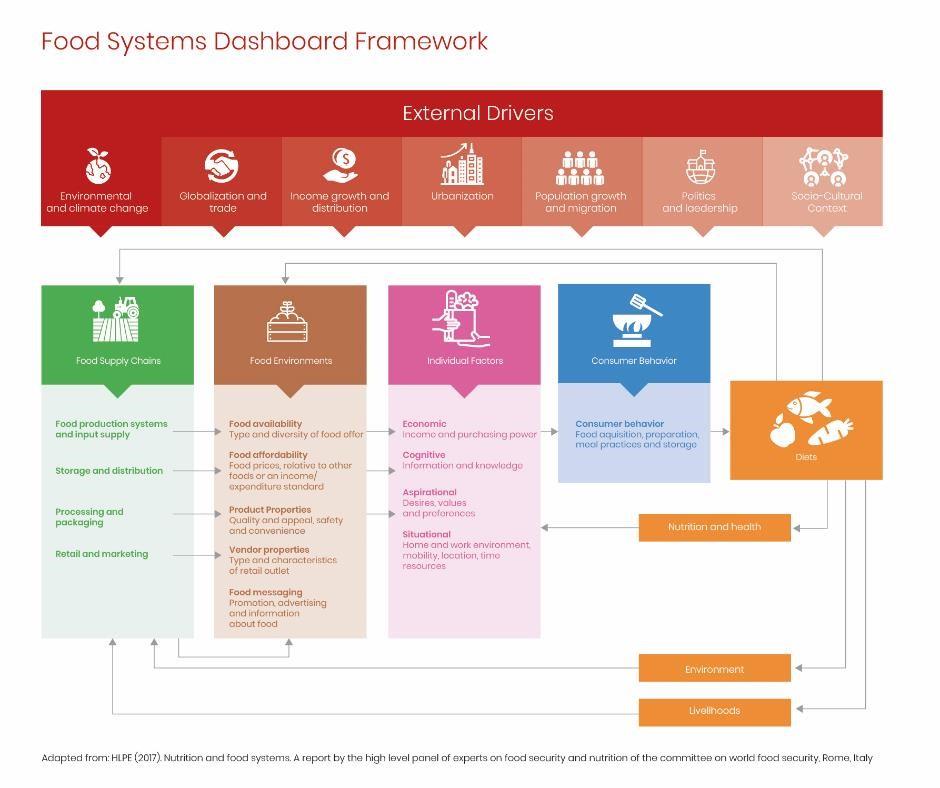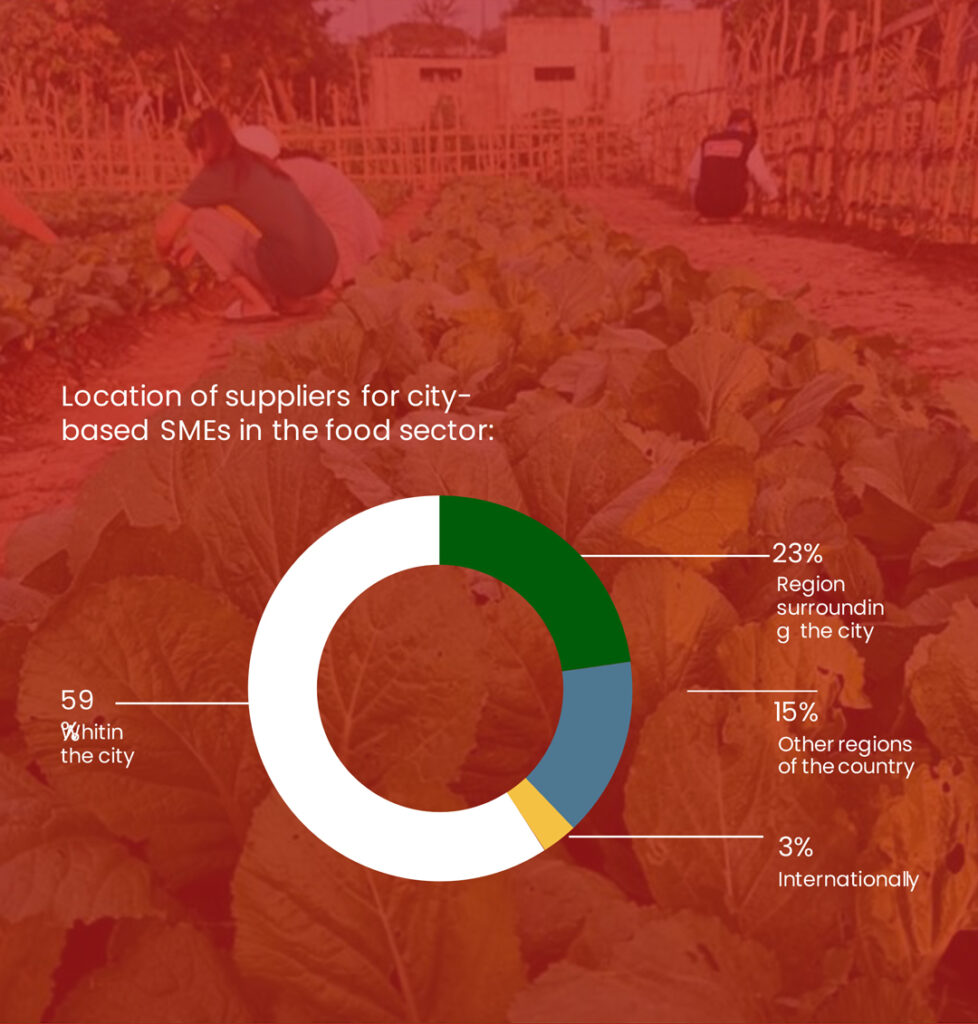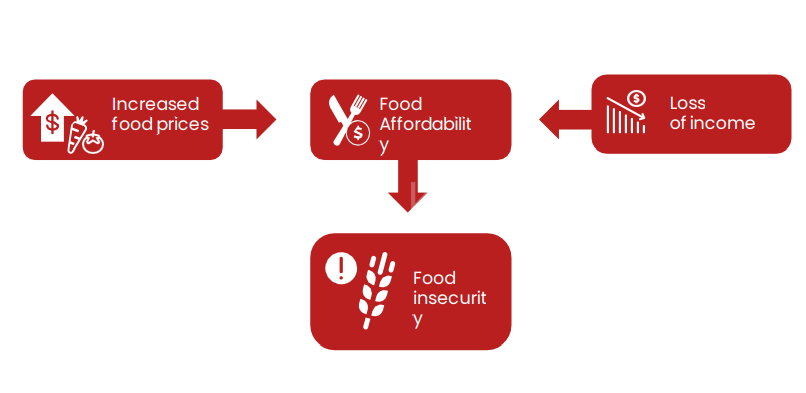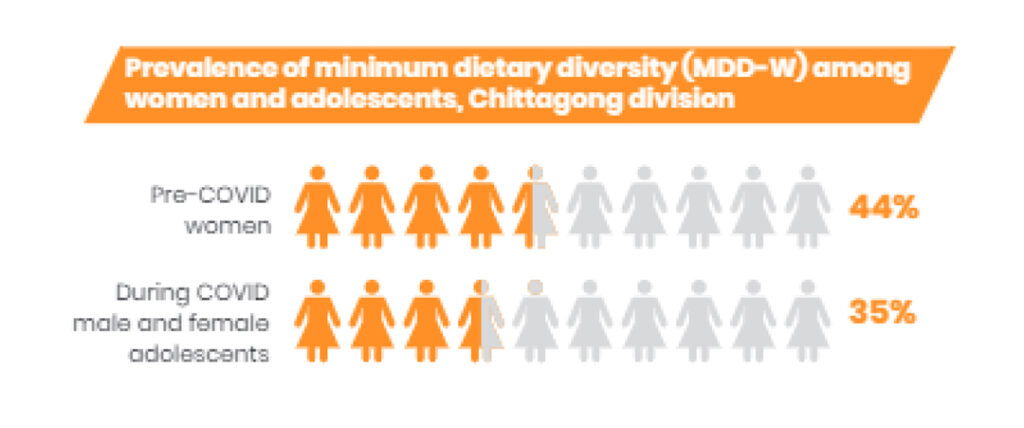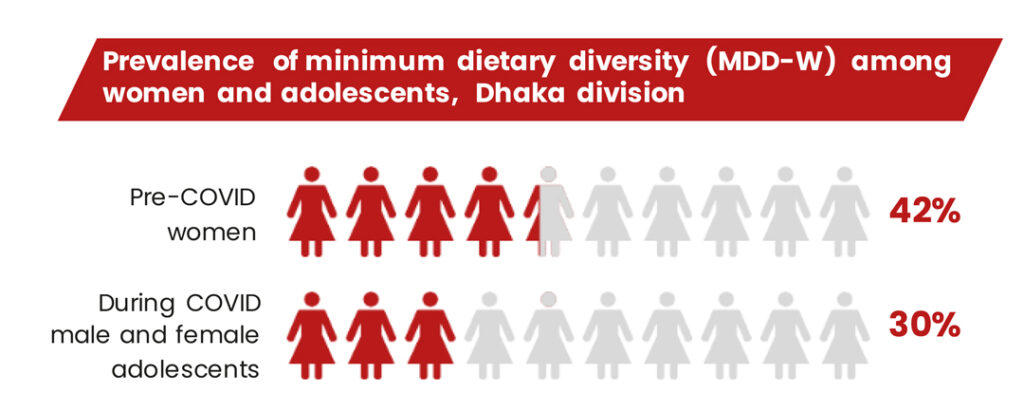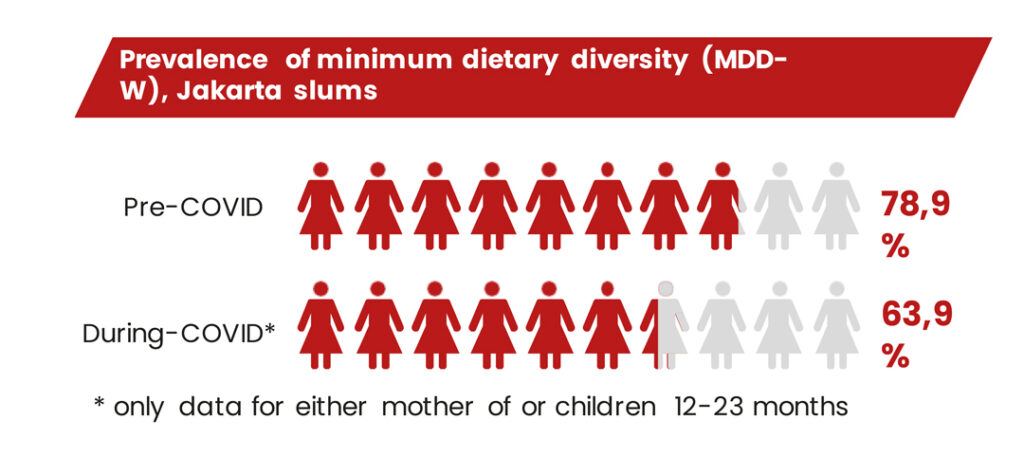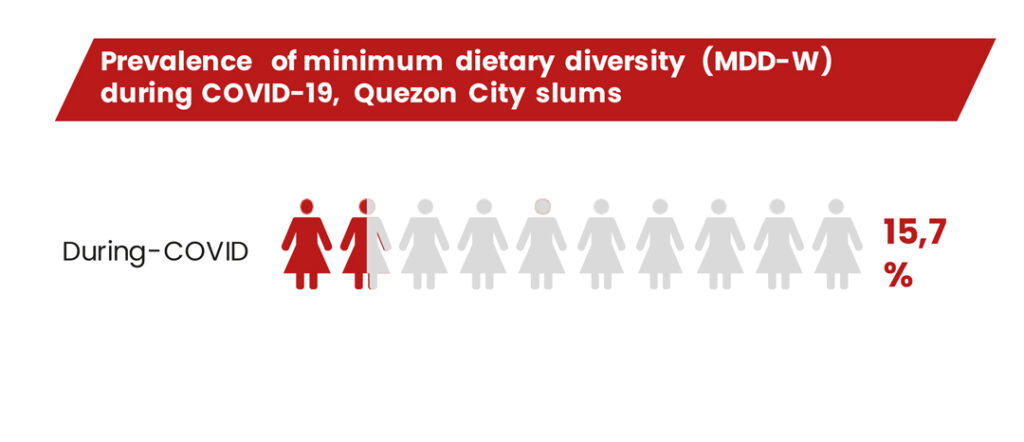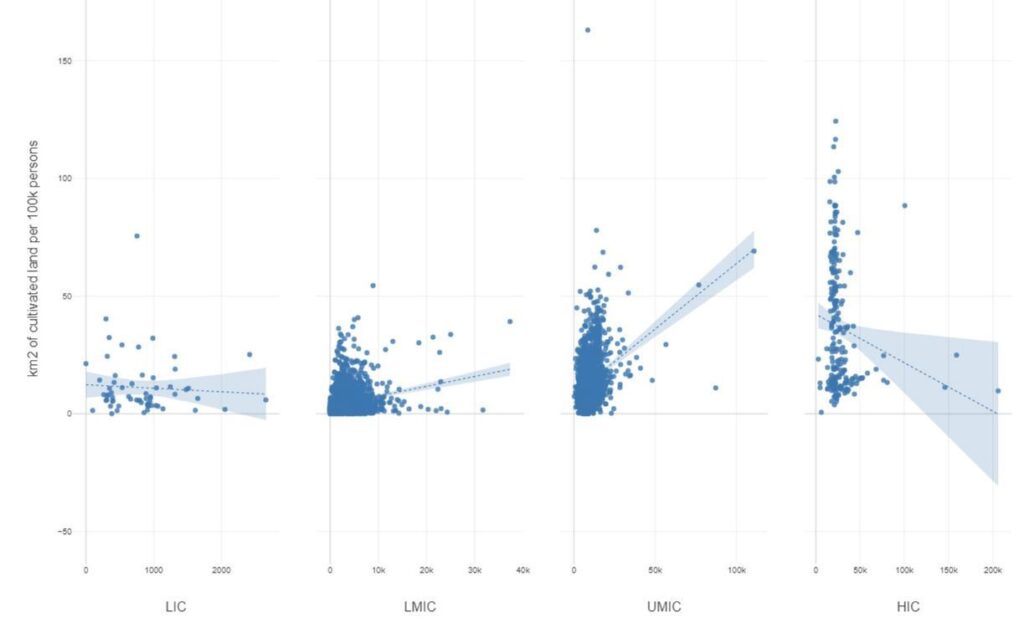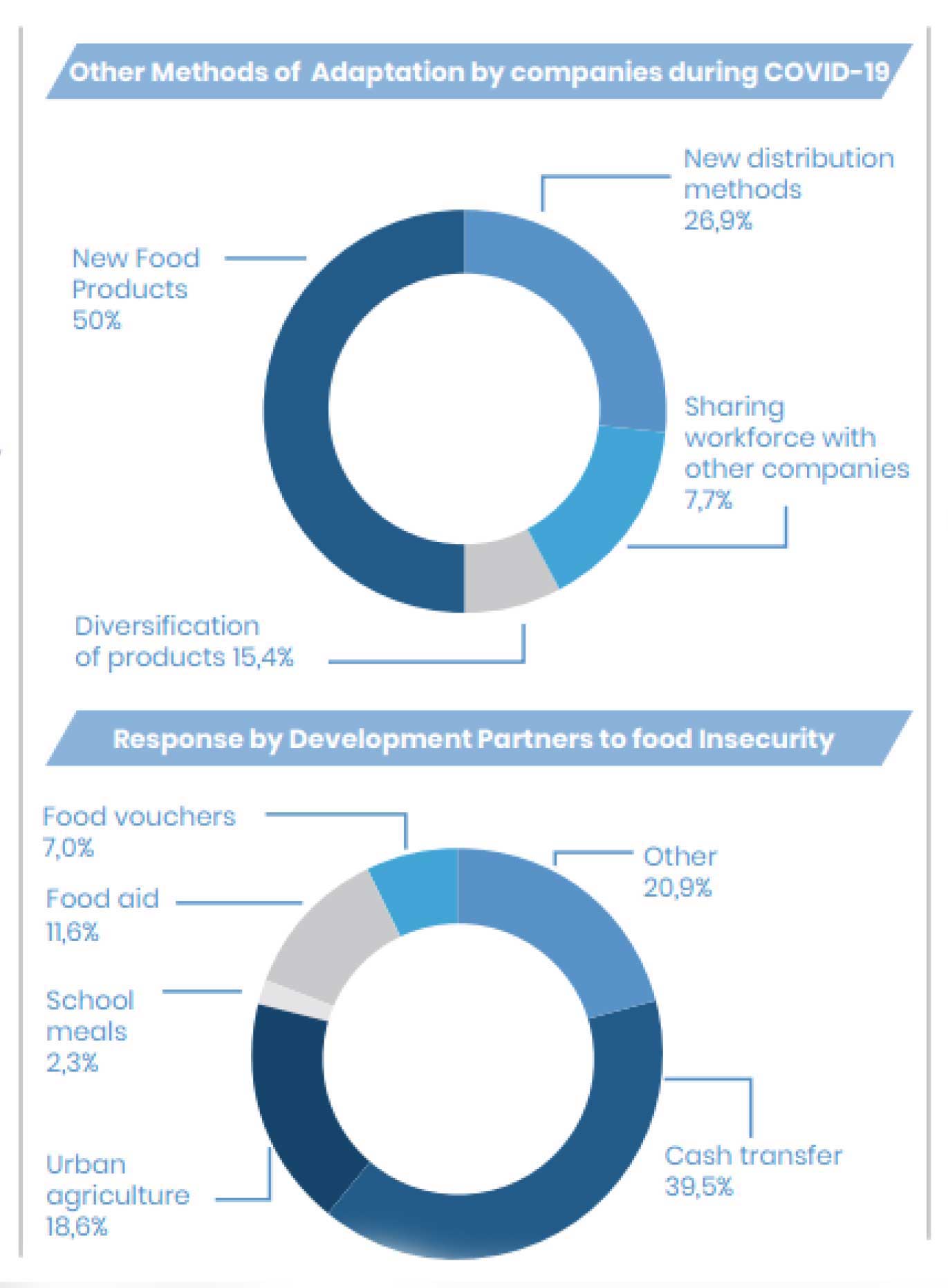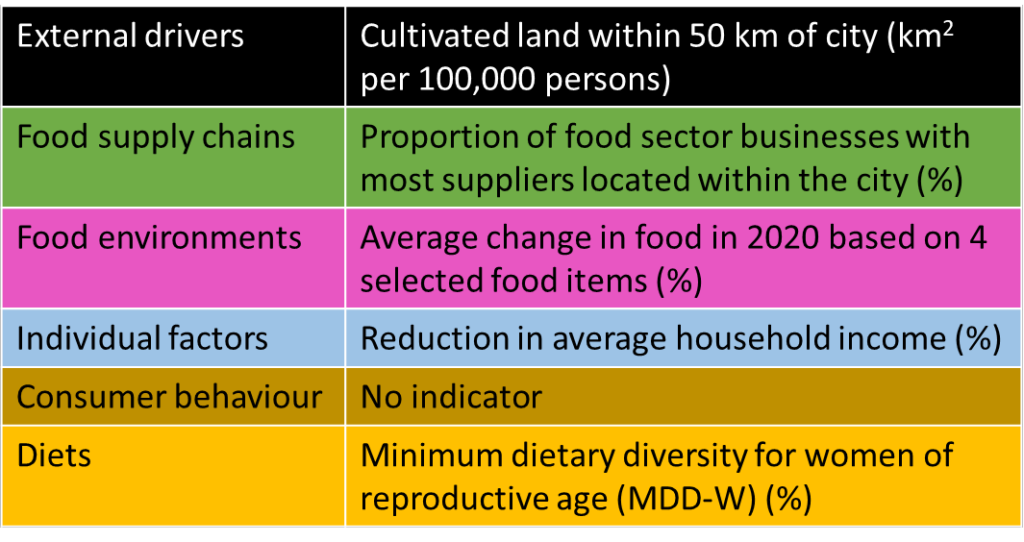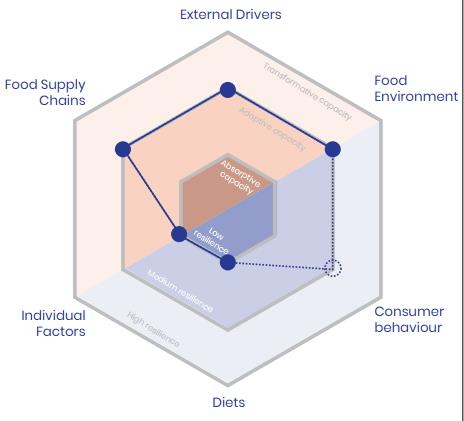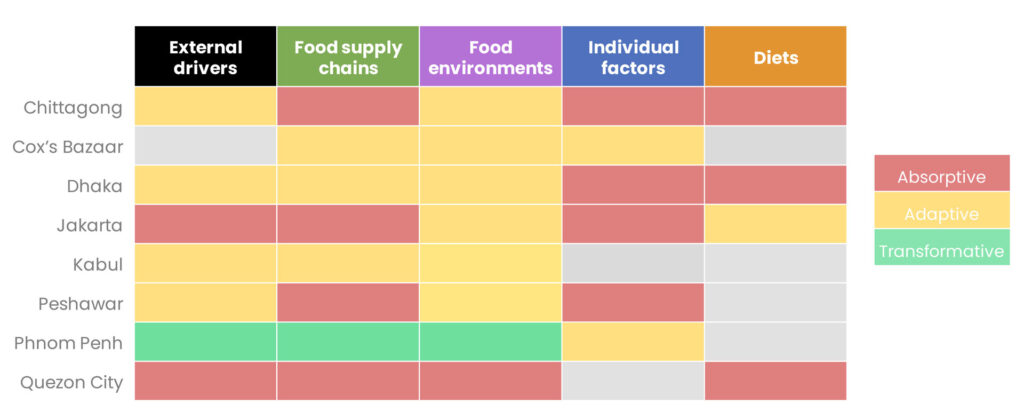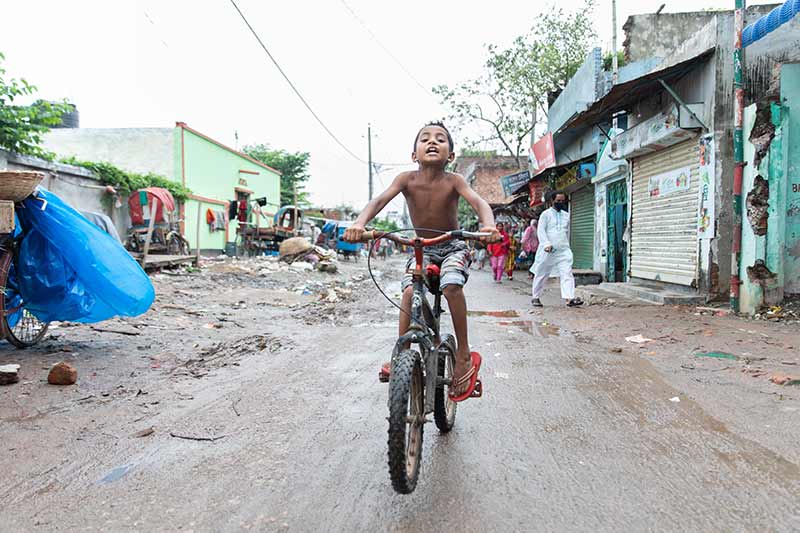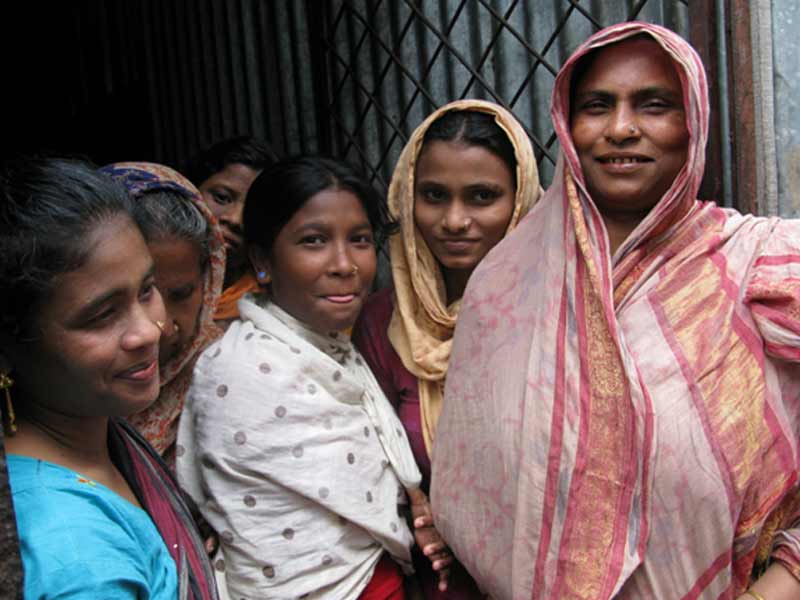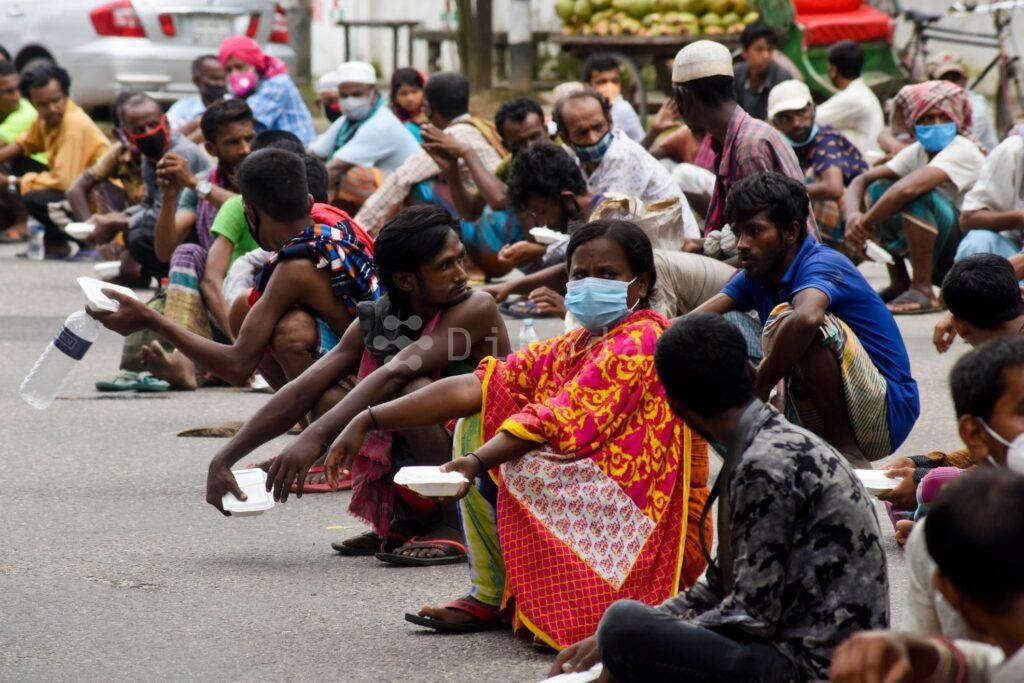
Food security and diets in urban Asia: how resilient are food systems in times of COVID-19?

Before COVID-19, highmalnutrition rates inurban areas in the Asia region

Cities worst hit by COVID-19Insufficient evidence on how food systems have adapted

1.Assess the level of resilience of urban food systems in the face of the COVID-19 crisis in eight selected cities in the Asiaregion
2. Build evidence on nutrition-specific/sensitive interventions and provide an opportunity to evaluate urban interventions
3. Understand the food environment in slum settings and the level of resilience of informal food actors during COVID-19

Urban Food Systems Analysis in 8 cities
Increased vulnerability andfood insecurity

Disruptions to food supplychains
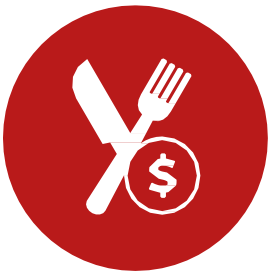
Increased foodprices

Lossof income
“The effect on us was more negative since our patron customers were gone. Our income really went down, meaning our income from what we sell now is only a quarter [of our usual income]. It is now more difficult to get products from our suppliers. There were times that prices are high, other times, prices are low … Currently, what we do is posting [our products] on Facebook so that people will order only from us then we deliver to them door-to-door. At least with the delivery, we are getting 5 pesos since we are using motorbike.
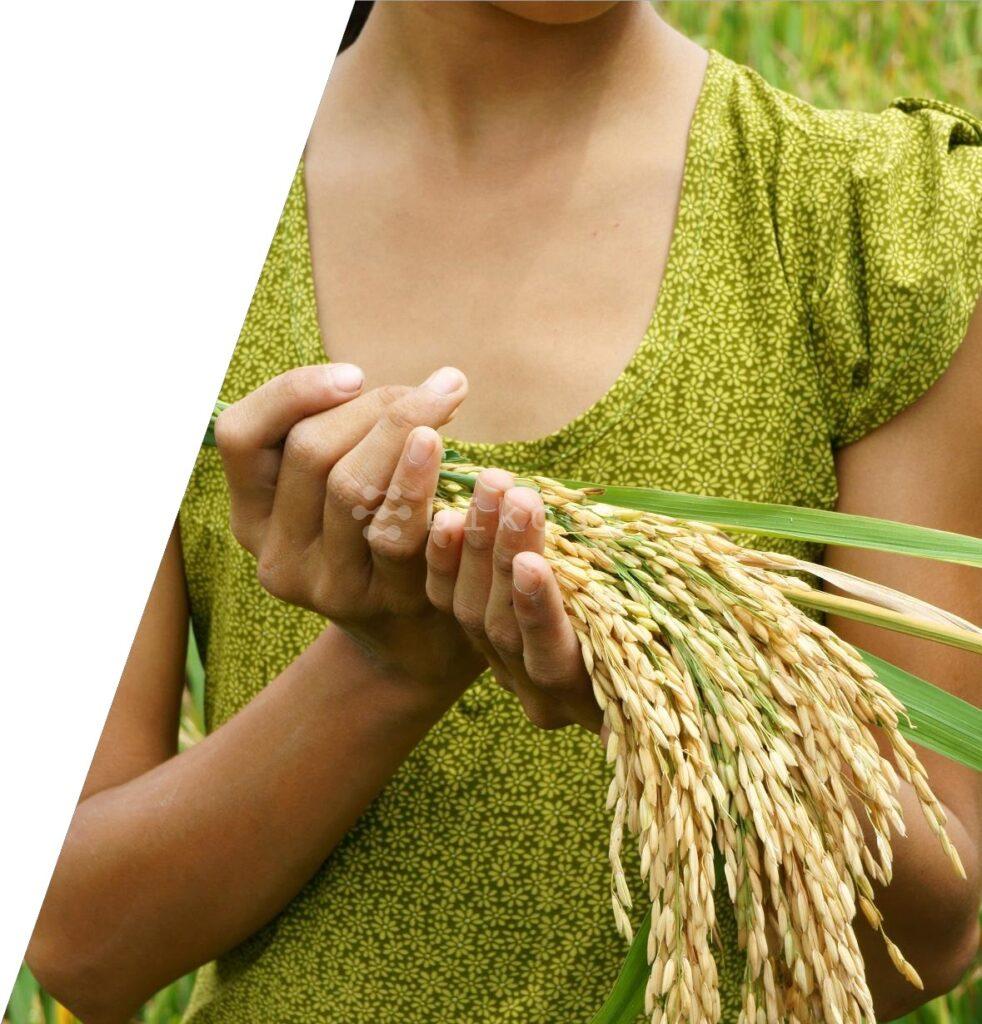
Food supplychains

Food supply chains were disruptedby border closures and travel restrictions duringthe pandemic
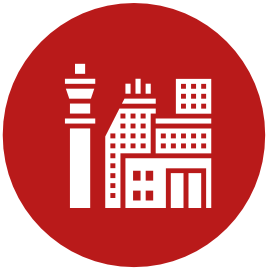
Urban areas typically have longer and morecomplex supply chains than rural areas

Interventions and responses:
- Business adaptations
- Government measures to keep food moving
- e-commerce
- Urban agriculture
Food environments
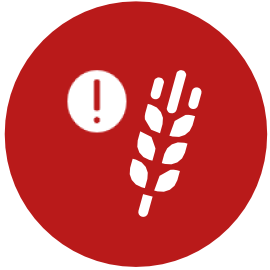
The combination of increased food prices and loss of income affected foodaffordability for the urban poor

Food prices increased in all eight cities with considerablevariationsbetween cities and between food groups

Daily wage earners have experiencedloss of income, indebtedness and foodinsecurity

Interventions and responses:
- Social protectionprogrammes
- Emergency cash assistance
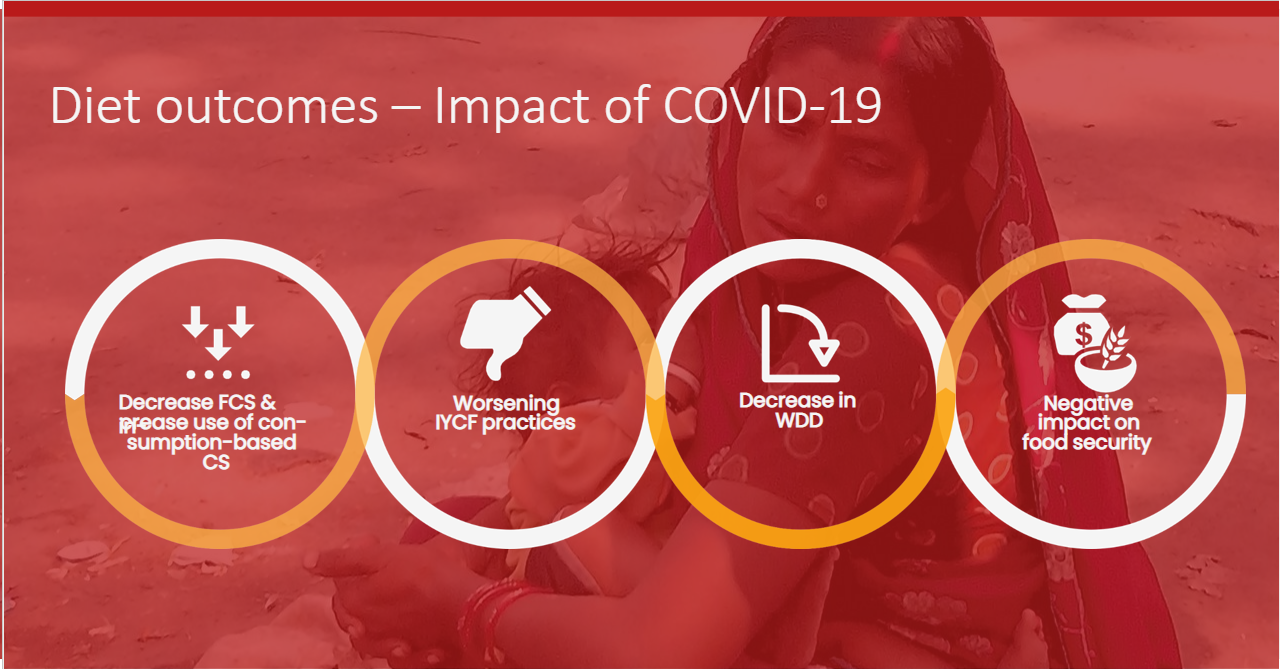

Impact of COVID on women’s dietary diversity
High heterogeneity
Low frequency of data collection
Low granularity => representative?
Providing context: external drivers
Urbanisation

Population and land-use dynamics influences the form of the city and the nature of the underlying food system

As cities grow, economic growth tends to attract more people, increasing the need for serviced land for settlement, reducing the space used to grow crops

Use of global (peer-reviewed) datasets that givetime-series data to help analyse trends i.e. growthrates etc
Growth of city over time
Global Human
Settlements Layer data
(1975 – 2015)
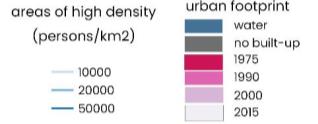
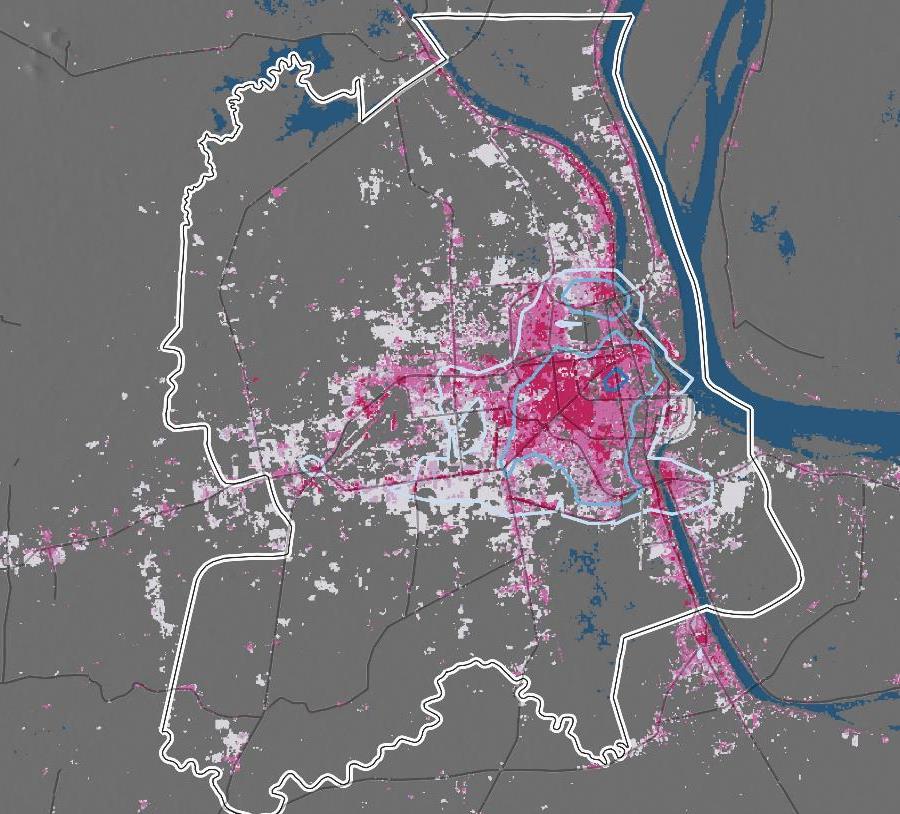
Cultivated land
EU Copernicus
landcover
classification data
2015
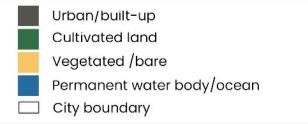
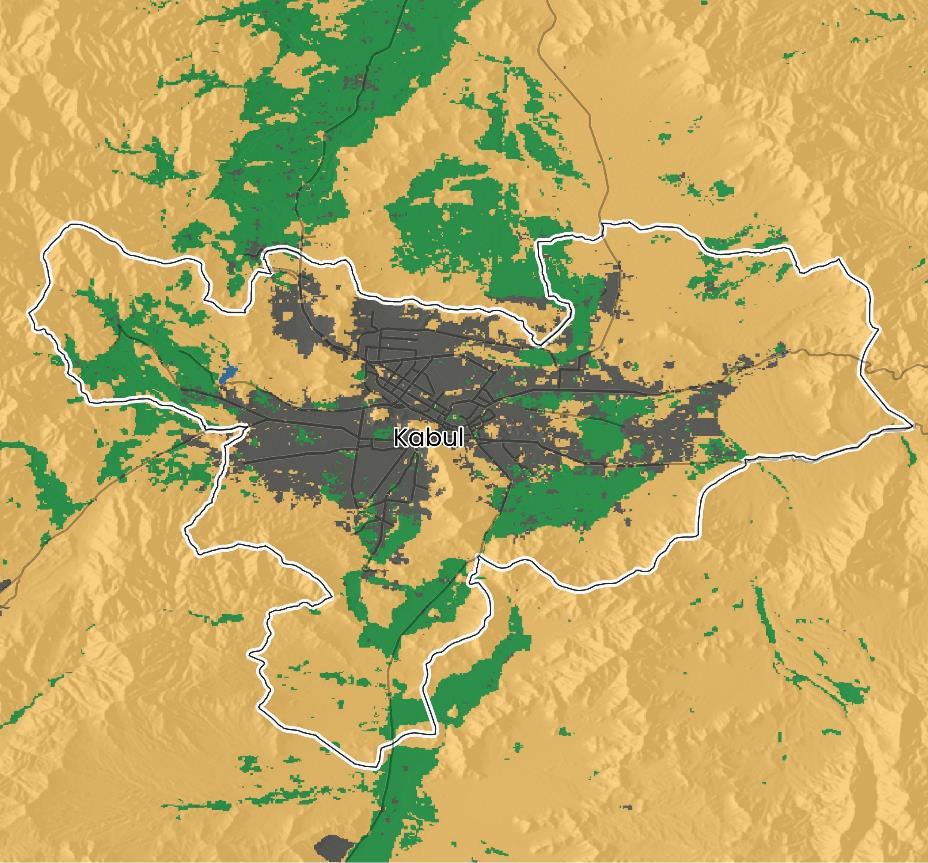
Incomes & Inequality
As incomes rise:

A city’s relationship with land changes

Diets change, greater consumption of ‘luxury foods’

Inequality may rise too, urbanization of poverty is a reality in many Asia-Pacific cities, growth of slum populations
Incomes & Inequality
“The effect on us was more negative since our patron customers were gone. Our income really went down, meaning our income from what we sell now is only a quarter [of our usual income]. It is now more difficult to get products from our suppliers. There were times that prices are high, other times, prices are low … Currently, what we do is posting [our products] on Facebook so that people will order only from us then we deliver to them door-to-door. At least with the delivery, we are getting 5 pesos since we are using motorbike.
External drivers: Implication for urban programming
Overview of the COVID-19 CityFood System Briefs includingtypology
COVID-19 City Food System Briefs

Aim to provide snapshots of city-level foodsystems and COVID-19 related impacts andvulnerabilities.

Based on the conceptual model of the Food Systems Framework with focus on available dataand components that are likely to be impacted by COVID-19.

Data from primary and secondary sources.


Methodological Recommendations

Standardized indicators of resilience and vulnerability to facilitate comparisons between cities

Formalization of urban food system typologies

Use of innovative approaches to defining urban areas
Preliminary program recommendations

Private sector partnership – combine technical assistance and knowledge transfer
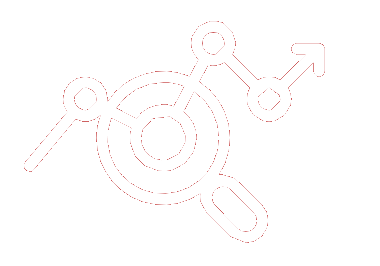
Social protection and safety net programs –adaptative and responsive to shocks
